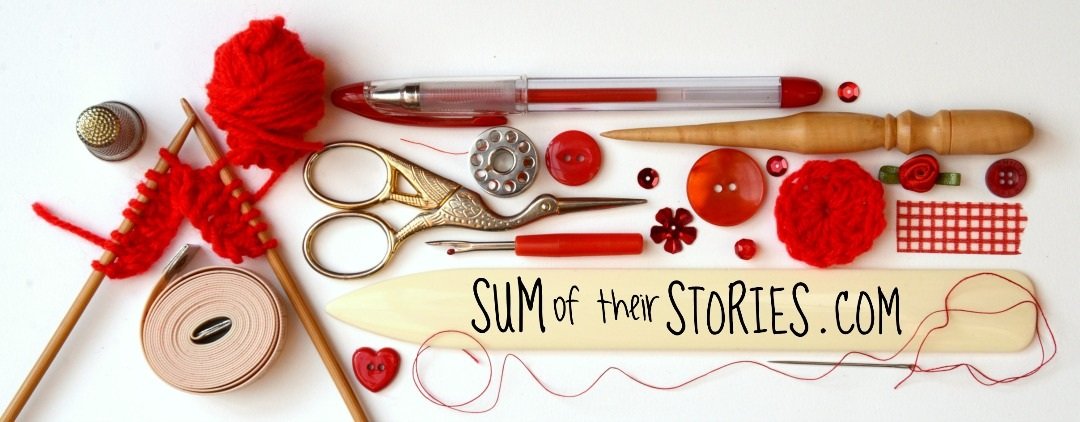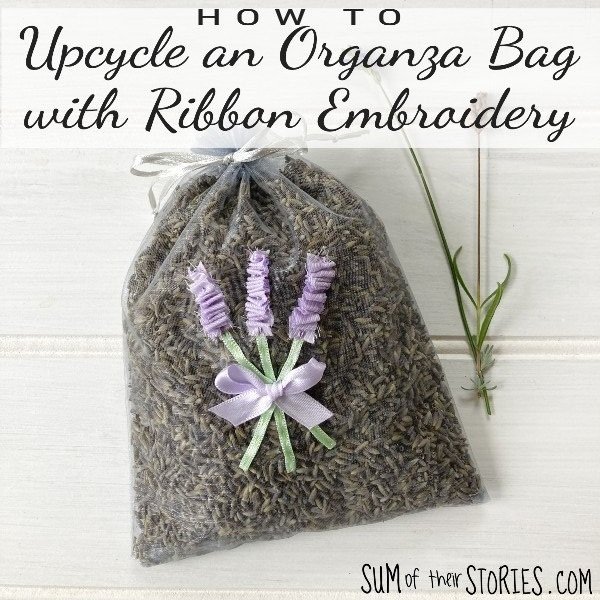18 Top Tips for Beginners: Sew Your Own Clothes
/18 Top Tips for Beginners: Sewing Your Own Clothes,
Sewing is a wonderful hobby. You can make beautiful and unique things for yourself and your friends and family. It’s a lot of fun and can be very relaxing as well as satisfying. It’s a great feeling when someone compliments a garment you’re wearing and you can say, all casual like, “oh, thank you, I made it myself”.
It’s not always plain sailing though, we all have to grab that unpicker sometimes and fix our mistakes, that’s part of the learning process. However there are lots of top tips that might not always seem obvious to a beginner which can really help make your sewing experience more enjoyable. Although you can’t guarantee perfection every time, you can increase the chances of a great outcome and a wearable garment considerably.
I’ve spent the last few months asking my sewing friends and acquaintances what their top tip is for newbie sewists. The same tips came up time after time. Starting with the most popular response, here’s what they said:
Pre wash your fabric
Only one person said they don’t bother to pre wash fabric and I can only assume is that they’ve never spent ages making something that has shrunk massively the first time it was washed, whereas the rest of us have!
I know you just want to sew. You get home with your fabric purchase, or receive your parcel in the post and you are itching to get started but pre washing your fabric is SO worth it.
If you fabric is a solid colour, especially a cotton or linen then another top tip is to soak your fabric in cold water until it is completely saturated first, then pop it in the washing machine and wash and dry in the same way you will be washing the finished garment. The pre soak really helps stop the annoying fading on the tiny creases that you can get with a solid colour, especially when it’s a natural fibre.
Don’t rush
Don’t rush; you’re not on “Sewing Bee”! You don’t have to make a garment in 2 hours. You can take 2 days, 2 weeks or even 2 months of you want to. Do all your prep, cutting out etc then why not take a break, have a cuppa or even start the actual sewing another day. If you are tired, take a break. Very few people make successful things late at night. Rushing at midnight because you want to wear that new dress tomorrow is highly unlikely to result in a beautiful wearable dress. I’m not saying it can’t happen, just that the odds are against you!
We are sewing because we love it, rushing just sucks all the fun out of it. Take your time to enjoy your favourite new pastime. Sewing takes much longer than you think. It is not a bad thing that your sewing is not quick. You might see a 1 hour top on You Tube. It’s likely to be a pretty quick fun make but the chances are it’s going to take you much more than 1 hour and that is perfectly ok.
Press those seams
Basically the message here is do as you’re told! Don’t ignore the part when your pattern says press. Press your seams; it really does make them better. Press in the direction the pattern says; it makes a difference. And while we are on the subject of pressing, it’s not quite the same as ironing your clothes, think more of a pressing down and lifting up action rather than slidey slidey. I have a little travel iron and mat set up in my sewing space so I don’t have to get the big ironing board out each time.
Read the pattern
Read your pattern and follow it carefully! Pattern hacks come later once you have more experience.
Those fabric recommendations on the back of the pattern are good, they tell you what fabric this pattern will work with. You can go off piste of course and your garment might be fantastic but there is a good chance it won’t if you don’t have much sewing experience.
Read the sizing chart, measure your body, pattern sizes are almost always WAY different to high street sizing. Most patterns give details of body measurements and finished garment measurements for each size so use both to help you decide what size to make.
Check the seam allowance stated on the pattern and then stitch your seams accordingly.
Clip the seams when instructed to.
Mark all the notches, darts and other pattern markings on your fabric - they don’t put them on for fun, they are there to help you.
Read all the sewing instructions before you start and then refer to them regularly as you sew.
When the pattern calls for stay stitching or basting just do it! These pattern writers know what they are talking about. This is all just more of that “do as you are told” thing!
Hold your threads
Hold on the both threads at the back of the machine for a couple of seconds as you start a seam. Apparently with some modern machines this is not necessary, but honestly I would advise just getting in the habit of doing this anyway and save yourself a lifetime of snarled up ‘mini thread birds nests’ on the back of your fabric.
Backstitches
Don’t forget to secure your seams with a couple of backstitches at the start and end, this stops your seams from potentially coming undone.
If your fabric is very fine and is bunching up when you try to backstitch at the ends then a good alternative is to really shorten your stitch length for the first 1/2 cm (1/4”) then stop and adjust the stitch length back to normal (2.5) to continue the seam. And I’m talking REALLY shorten the stitch length, almost as short as it can go. Those iddy biddy stitches are nice and secure and do the same job as a little backstitching. Be warned though, they are harder to unpick if you make a mistake.
Thread
Never use cheap thread, it’s a complete false economy and creates a whole world of issues.
And whilst we are talking all things thread, if you can’t get a perfect colour match then go a shade darker.
Having said that, a pale grey is a pretty good universal colour that works for most colours and patterns so is a good choice if you are patchworking lots of different colours together.
Needles
Consider different needles for different fabrics/sewing projects. A universal needle is ok, but you will get better results if you choose the right needle. You don’t need to go crazy with this but a ball point needle for stretchy fabrics and denim needles for really thick fabrics are both worth the switch.
Look after your sewing machine
The hand wheel - ALWAYS turn it forwards, not backwards.
Clean out all the fluff and dust from your machine regularly, oil it - check your manual to find out how, where etc
Let your sewing machine do it’s thing
Do not pull the fabric through the machine, guide it through but let the machine take it, don’t shove it though either. That’s how you get wavy seams and puckering.
Check your stitches first
Check your machine’s stitches on a scrap of your fabric when starting a new project. Is the tension right? Is the stitch length right? Just double over a scrap of the fabric so the thickness is right and stitch a couple of inches. Check your machine is behaving nicely before you start on your carefully cut out pattern pieces. Check you’ve not left it on a zig zag or a super short stitch by mistake.
Cut out CAREFULLY
Don’t rush the cutting out process.
It’s a good idea to iron your pattern pieces and your fabric so they are nice and smooth.
You can secure your pattern to the fabric with pins or pattern weights and you can cut your fabric with fabric scissors or a rotary cutter. But whichever method you choose being careful and accurate is really important. Honestly, just slinging on a couple of weights, smoothing the pattern and fabric with your hand and then wizzing round quickly with a rotary cutter? No, no, no people, that is not going to do at all!
Personally I like to pin my pattern to the fabric with loads of pins then cut with sharp scissors. I do use a rotary cutter all the time but normally for straight lines, when I use a quilting ruler as well.
Just think about it. When you look at a multi size pattern often the difference between one size and the next really isn’t that much. If you are cutting out carelessly with your fabric moving about and your cut lines are way off the pattern then you are likely to be making a garment a size or two different than you intended.
Check your Sewing Machine is correctly threaded
This may be a tiny bit hyperbolic but I swear almost all issues with your sewing machine can be fixed by rethreading. At least 9 times out of 10 when your machine is stitching weirdly, snarling up underneath, skipping stitches etc you can fix the issue by taking out the thread top and bottom, going away and making a cup of tea (coffee is also acceptable!) then coming back and calmly rethreading you machine. If you’ve not sewn for a while get out the machine’s manual and check that you are threading it correctly, you’ve not missed a section, the thread is going the right way at every stage etc. Definitely worth a try.
Toile
If you have a really gorgeous and expensive fabric for a special garment then consider making a toile. We are not talking about that lovely French fabric with a pastoral scenes in pink, blue or green but a practice run of your garment made in an inexpensive fabric. You can check the fit, make sure you understand the construction and practice your skills before you go for it with the precious fabric. It’s a lot more work of course but can save a lot of heartache later. Old sheets or duvet covers are excellent for making toiles. People often refer to wearable toiles which is when you make a practice garment that is nice enough to wear.
Protect your fabric scissors
In the sewing community we joke about our precious fabric scissors a lot, there are memes galore, it’s all terribly funny. But underneath all this joviality is the dark truth that your fabric scissors are a precious thing and you must protect them at all costs! These are the facts of the case and they are undisputed:
good fabric scissors are expensive
you need good fabric scissors to cut fabric accurately
cutting other things like paper and tape damages scissors
Make things you want to wear
I really like this tip; make things you actually want to wear. Trends are nice and there are certainly plenty of them in the sewing world. New pattern releases can become wildly popular and it can seem like every other person on Instagram is making them. Don’t get swept along and spend your precious time and energy making things that you don’t really like, that don’t suit you or that don’t fit in your lifestyle.
It’s really good to start simple, with an easy pattern and a good tempered, easy to handle woven fabric but do make sure you like it.
Mistakes are inevitable
It’s true, mistakes are inevitable. We’ve all had total disasters on our sewing journeys. The best advice here is to learn from it and move on.
Consider using social media to help you
If you use social media then you’ll find the online sewing community is generally a fairly friendly and helpful place. If you get stuck there is a whole world of sewists out there who love to give advice. There are loads of big facebook groups that welcome questions. Obviously this is the internet so there are a few less pleasant know it alls out there who may be a little short or unkind with their comments and replies but in a well run group the admins will be all over that. Maybe join a few groups and just hover for a while, see what people ask and how the group responds to decide if it’s your kind of group.
Instagram is an amazing place to see handmade clothes. Lots of talented people and groups to follow. I’m a big fan of SewOver50 as a lovely group for inspiration as an over 50 myself. What is really helpful is that you can search any pattern name and number as a # and find load of different versions in different fabric worn by actual real people. It’s perfect to see how a pattern looks on different body shapes and how different fabrics drape etc.
If you are new to sewing you might also find my guide on all the things you need to get started helpful too. Sewing can be an expensive hobby but you don’t need to buy everything all at once. This guide explains the difference between an essential and a “nice to have one day” and also has top tips for keeping the costs down - What you need to get started: Sewing
The main thing is to relax and enjoy your sewing journey, hopefully some of these hints and tips will help you.
Julie
I’ll be sharing this list at some of these link ups


























